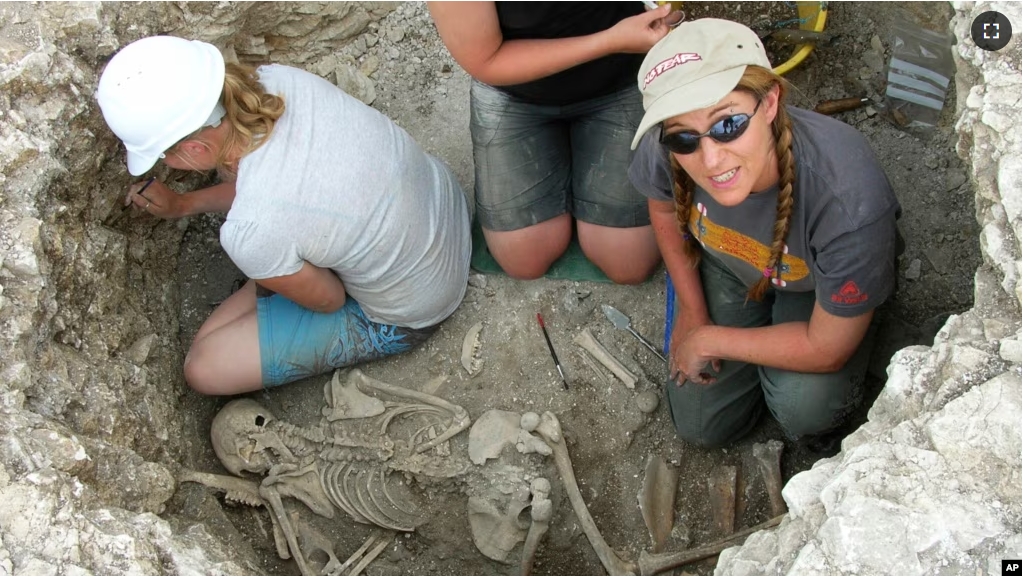A recent study suggests that female family ties were central to social networks in ancient Celtic society before the Roman invasion.
Genetic evidence from a late Iron Age cemetery in Britain shows that women were closely related. At the same time, unrelated men were more likely to come into the community from other places, likely after marriage.

For the study, researchers examined ancient DNA from 57 burial places in Dorset in southwestern England. People used the cemetery from around 2100 years ago to around 1800 years ago.
The results showed that two-thirds of the individuals descended from a single maternal lineage.
Lara Cassidy of Trinity College Dublin was one of the study’s co-writers. Cassidy suggested to the Associated Press (AP) that the results were surprising, or in her words, “jaw-dropping.”
She said that such a finding had “never been observed before in European prehistory.”
The study appeared recently in the scientific publication Nature.
The research suggests that women stayed in the same circles throughout life. They kept social networks and likely inherited or managed land and property.
Cassidy told the AP that the findings suggest, “it’s your husband who is coming in as a relative stranger, dependent on a wife’s family for land and livelihood.”
Such a way of living is called matrilocality. The researchers said it is historically rare.
Guido Gnecchi-Ruscone is with the Max Planck Institute in Germany. Gnecchi-Ruscone was not part of the study.
He said researchers studying burial places in Britain and Europe have only discovered the opposite behavior. He said in those communities, women left their homes and families to join their husband’s family group.
He said such a way of living, known as patrilocality, has been observed in other ancient time periods. These include the Neolithic period which started more than 10,000 years ago to the early Medieval period more than 1000 years in the past.

Cassidy said in studies of pre-industrial societies from around 220 years ago to the present, researchers found that men join their wives’ extended family households only eight percent of the time.
But researchers already knew there was something special about the role of women in Iron Age Britain. A group of tribes with closely related languages and art that is often described as Celtic lived in England before the Roman invasion about 2000 years ago.
Valuable objects have been found buried with Celtic women. Roman writers, including Julius Caesar, wrote with disrespect about their relative independence and fighting abilities.
The network of strong female family connections that the researchers found does not necessarily mean that women also held official positions of political power.
Study co-writer Miles Russell of Bournemouth University in England researches ancient societies. He said the findings do suggest that women had some control of land and property and strong social support. Such a situation made Britain’s Celtic society more “egalitarian” than the Roman world, Russell said.
I’m John Russell.
Christina Larson reported on this story for the Associated Press. John Russell adapted it for VOA Learning English.
____________________________________________________
Words in This Story
cemetery – n. a burial ground
descended from –v. (phrasal) to be related by birth to an ancestor
maternal – adj. of or related to the mother
lineage – n. a group of individuals descending from a common ancestor
inherit –v. to receive property or something of value because of a family relationship
manage –v. to oversee or look over
extended family – n. a large group of people who are related by blood or marriage who consider themselves as a large family
egalitarian –adj. aiming to make people in a society more equal than they are
